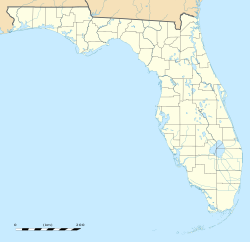Crawlerway
Facilities and geographic features of Kennedy Space Center Facilities and geographical features of Kennedy Space Center: 1 Launch Complex 39 (LC-39A)2 Launch Complex 39 (LC-39B)3 Vehicle Assembly Building4 Shuttle Landing Facility5 Kennedy Space Center Visitor Complex6 Apollo/Saturn V Center7 Banana River8 Indian River9 KSC Headquarters Building10 Astronaut Beach House11 Banana Creek12 Cochran Cove13 Operations and Checkout Building14 Launch Complex 4815 SpaceX Roberts Road Operations Center16 Exploration Park17 Blue Origin Ransom Road facility18 Crawlerway19 Launch Control Center20 Orbiter Processing Facilities 1 and 221 Orbiter Processing Facility 322 Launch Complex 39 Press Site23 Multi-Payload Processing Facility24 Space Systems Processing Facility25 NASA Railroad (Wilson Junction)The Crawlerway is a 130-foot-wide (40 m)[2] double pathway at the Kennedy Space Center in Florida. It runs between the Vehicle Assembly Building and the two launch pads at Launch Complex 39. It has a length of 3.4 and 4.2 miles (5.5 and 6.8 km) to Pad 39A and Pad 39B, respectively. A seven-foot (2 m) bed of stones lies beneath a layer of asphalt and a surface made of Alabama river rocks. The Crawlerway was originally designed to support the weight of the Saturn V rocket and its payload, plus the Launch Umbilical Tower and mobile launcher platform, atop a crawler-transporter during the Apollo program. It was also used from 1981 to 2011 to transport the lighter Space Shuttles to their launch pads. Construction of the Crawlerway connected Merritt Island with the mainland, forming a peninsula. The main vehicle access road to and from the launch pads, the Saturn Causeway, runs alongside the Crawlerway. ConstructionThe Crawlerway is composed of two 40-foot-wide (12 m) lanes, separated by a 50-foot (15 m) median. The top layer is Alabama river rock, 4 inches (10 cm) thick on the straight sections and 8 inches (20 cm) thick on curves. Alabama river rock was chosen for many properties, including hardness, roundness, sphericity and LA abrasion test score.[3] Beneath that is 4 feet (1.2 m) of graded, crushed stone, resting on two layers of fill.[2] By 2013, a project to repair and upgrade the Crawlerway was undertaken, the first time since it was constructed that the foundation had been repaired. Additional rock was added to the surface in June 2014.[4] Gallery
References
External links
|
||||||||||||||||||||||||
























